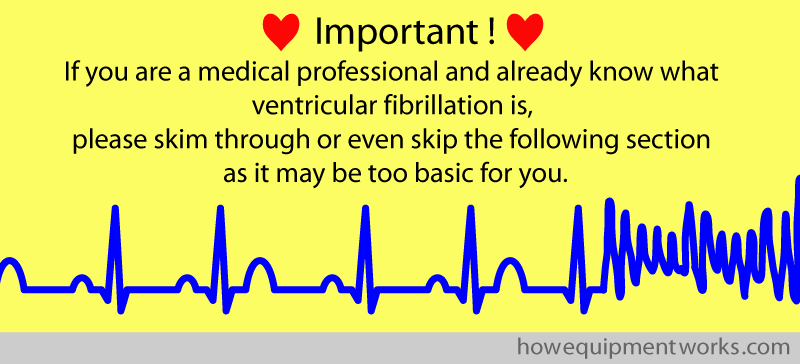
This section is for those who are non-medical but want to know what defibrillation is, before moving on to understanding how defibrillator machines work.
Once you understand the basics of defibrillation, please click here to move to the page explaining how defibrillator machines work.
What is “ventricular fibrillation”?
In this section, I will explain to you in a simplified way, what “ventricular fibrillation” is. However, before we begin, I need to warn you that I am not a good artist and therefore the “hearts” that I will draw in our discussion will not look anything like the real heart in your body !

I am sure that you are aware that the function of the heart is to pump blood. You can think of the heart as a pump consisting of a flexible “bag” surrounded by heart muscle cells. I have drawn the heart muscle cells as yellow squiggly lines.
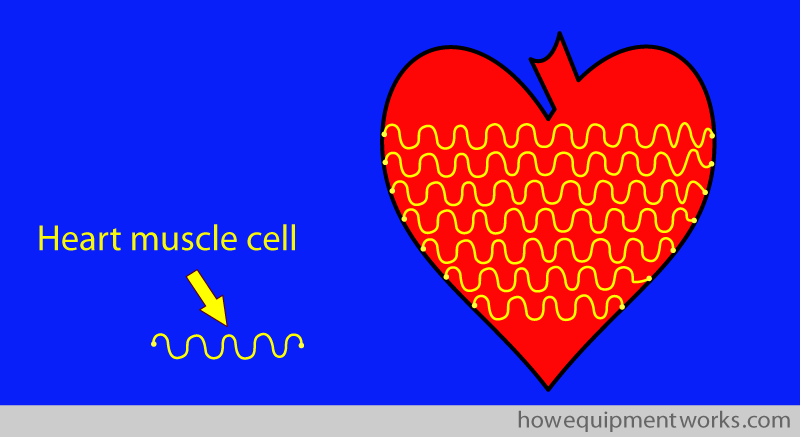
The heart muscle cells have some unique features. Firstly, and luckily for us, these muscle cells are very strong ! To pump blood out, the heart muscle cells contract and become shorter. This “squeezes” the heart and pushes the blood out (red arrow).
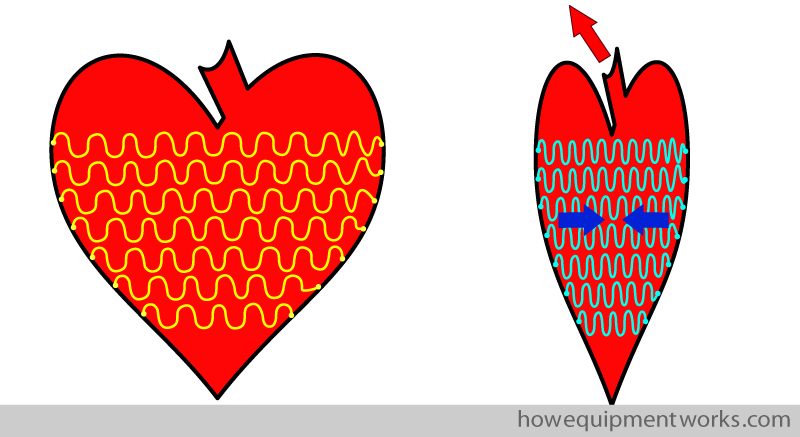
To effectively pump blood out of the heart, the heart muscle cells contract in a “coordinated way”. In a very basic way, I have shown this in the images below. You will notice that first the lower heart muscle cells contract (B), emptying blood from that area to the area in the middle. Then the muscle cells in the middle also contract (C), emptying blood to the top. Finally the muscle cells at the top also contract (D). You an see that as the muscle cells contract in a coordinated way, blood gets pumped out of the heart.
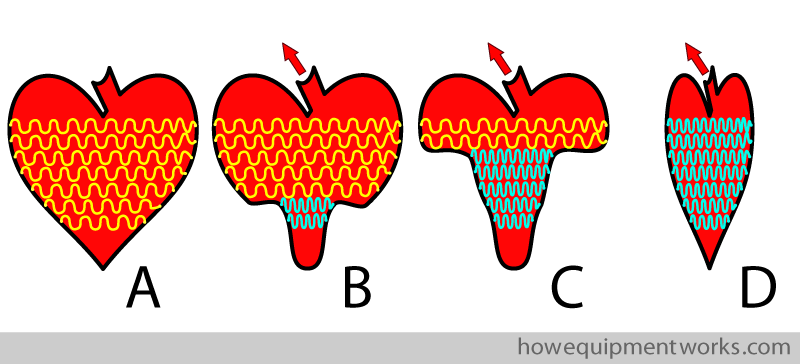
It is important that the heart muscle cells contract in a coordinated manner. If the heart muscle cells contract in a disorganised way, blood will not be pumped out of the heart effectively. In the example below, the heart muscle cells in the middle have contracted before the heart muscle cells at the bottom have contracted. The blood therefore gets “trapped” at the lower half of the heart and the heart doesn’t pump blood effectively.
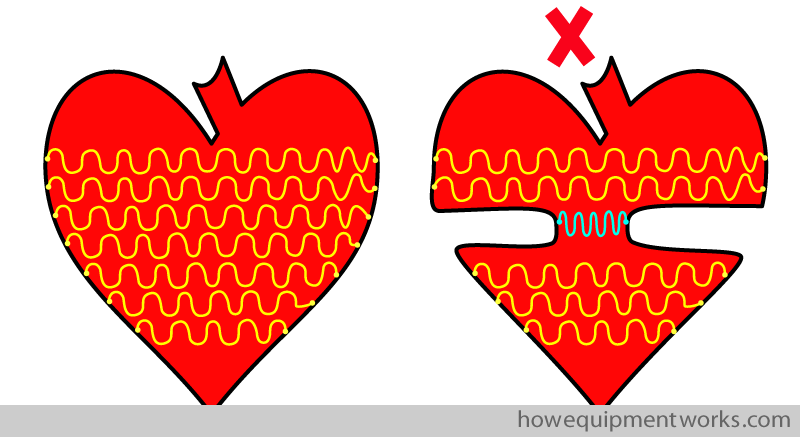
To coordinate the muscle cell contractions, the heart has a “control system”. This control system uses electrical signals to communicate with the muscle cells. I have shown this “control system” in dark blue below.
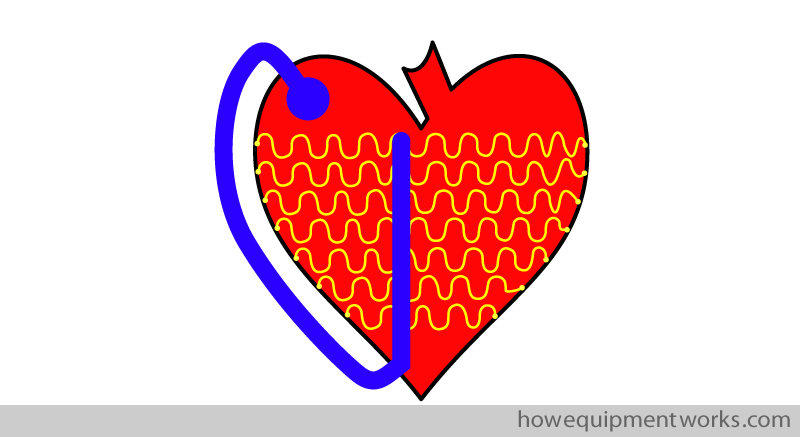
Using medical terminology, the “control system” can be called the “pacemaker and conduction system”. However, to keep things simple in our discussions, I will continue to call it the “control system”.
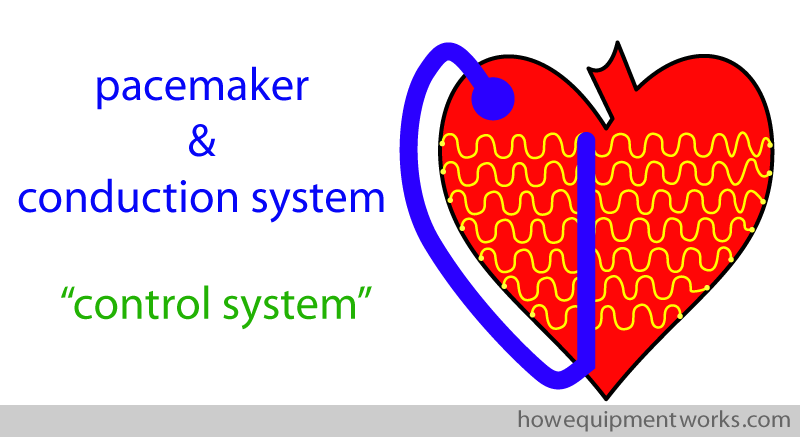
At regular intervals (i.e. for each heart beat), the control system sends electrical signals (shown as green dots) to the heart muscles.
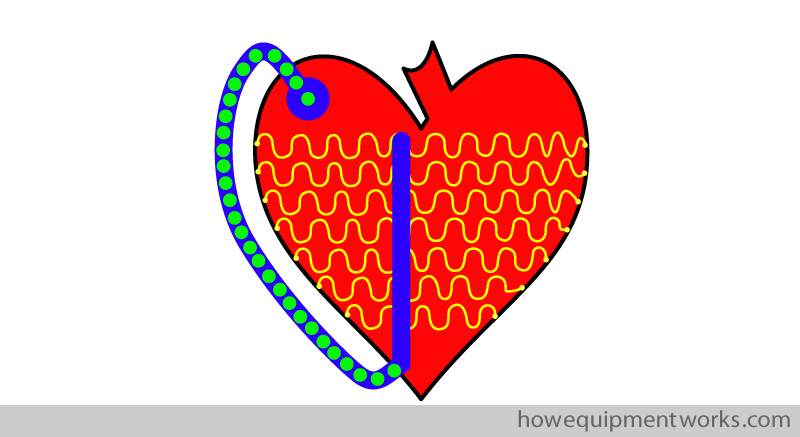
The heart muscle cells “listen” for the presence of the electrical signal sent from the control system. When heart muscle cells “hear” the electrical signal, they contract. In the diagram below, the heart muscle cells at the lower part of the heart have got the electrical signal, and are therefore contracting. The other parts of the heart have not got this signal yet and are therefore in a relaxed state.
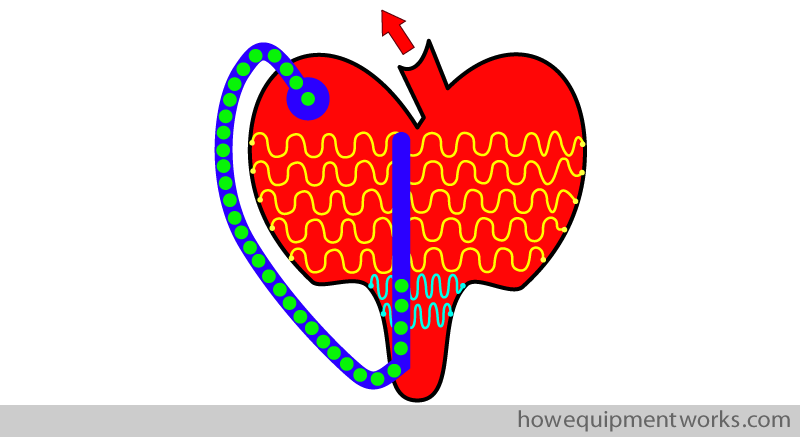
As the electrical signal travels further, more of the heart muscle cells contract. In the image below, you can see that now the heart muscle cells in the middle have received the electrical signal and are contracting.

Finally the electrical signal from the control system reaches the heart muscle cells at the top, which then contract, pushing out the last bit of blood.
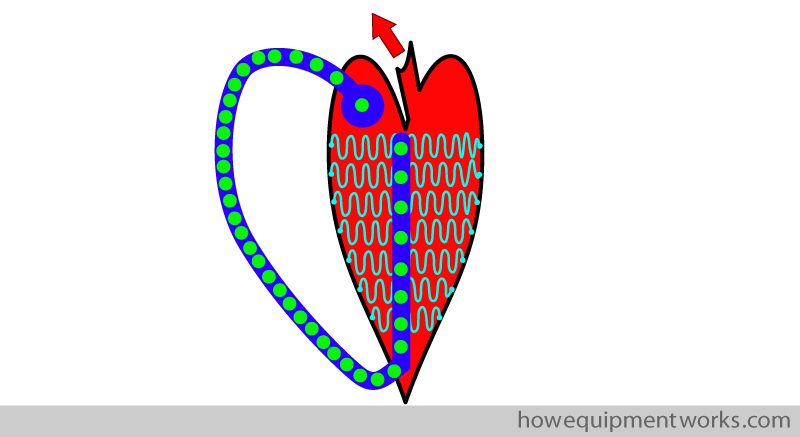
You can see that in this way, the control system, using electrical signals, is able to make the heart muscle cells contract in a coordinated way and effectively pump blood out of the heart.
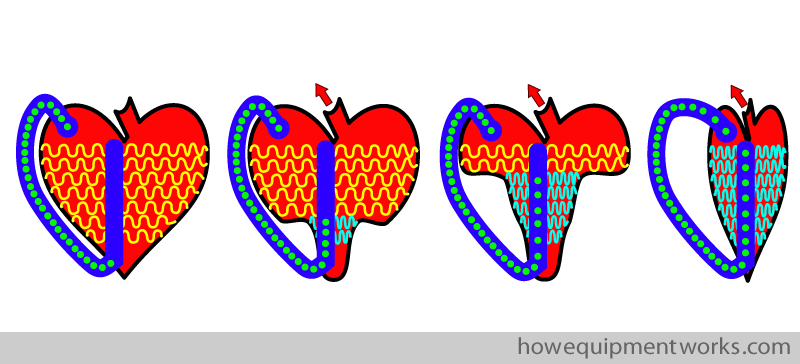
A very serious situation called “ventricular fibrillation” can happen to the heart where the electrical signals are completely disorganised, making the heart unable to pump blood. Needless to say, if nothing is done quickly about this, both the heart and the person it belongs to, would not survive beyond a few minutes. I will now explain to you what ventricular fibrillation is.
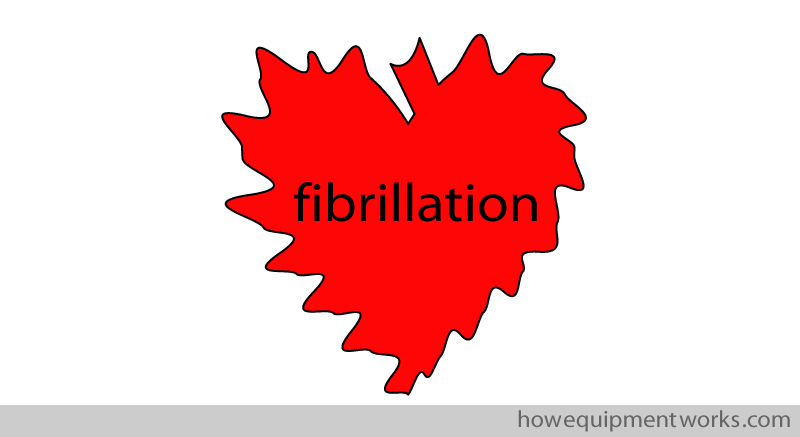
Let me first explain to you what the word “ventricular” of “ventricular fibrillation” means. The images of the heart I have drawn so far have looked a little like a “single bag”. In real life, the heart is composed of four individual “bags”, or to say it more elegantly, “chambers”. The lower two chambers are very strong and do most of the pumping work of the heart. These two lower chambers are called “ventricles”.
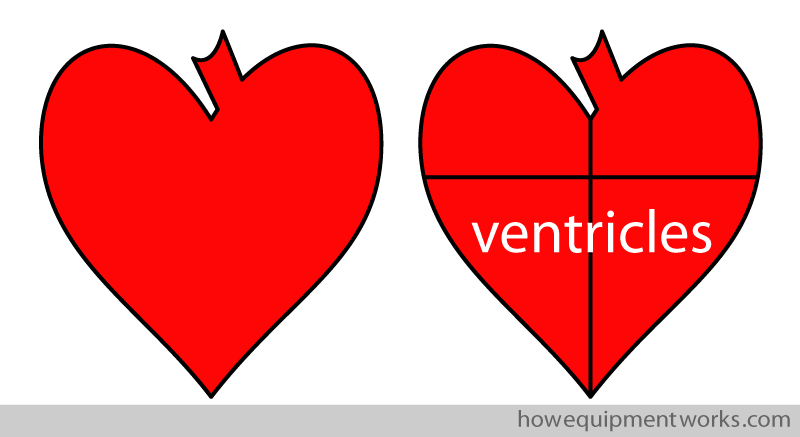
We will soon discuss an electrical disturbance called “fibrillation”. When fibrillation affects the “ventricles”, it is called “ventricular fibrillation”.
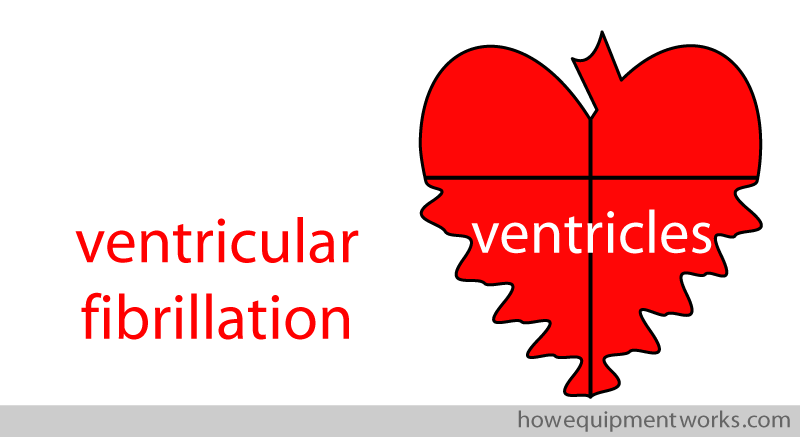
Now that you know what “ventricles” are, let me explain what “fibrillation” is. To explain this, I will be taking you back to school! Shown below is a small school where you can see children quietly sitting in a classroom. At the front is the teacher who is teaching the alphabet by making the children repeat after her. She starts by saying the letter “A”.
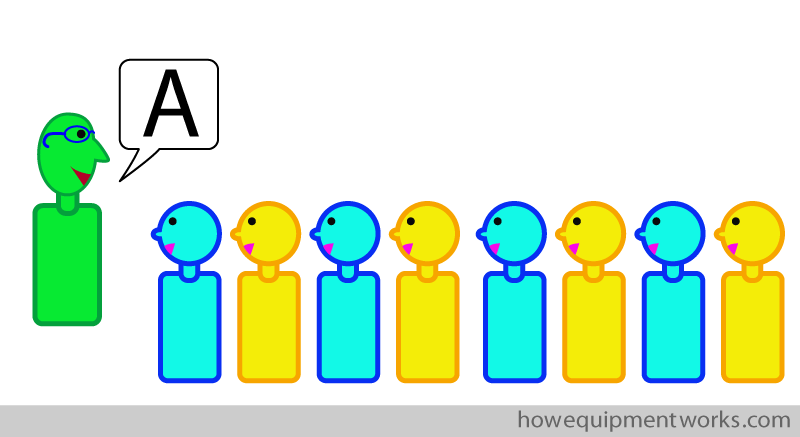
These lovely children repeat after her. As you can see, the children are learning well.
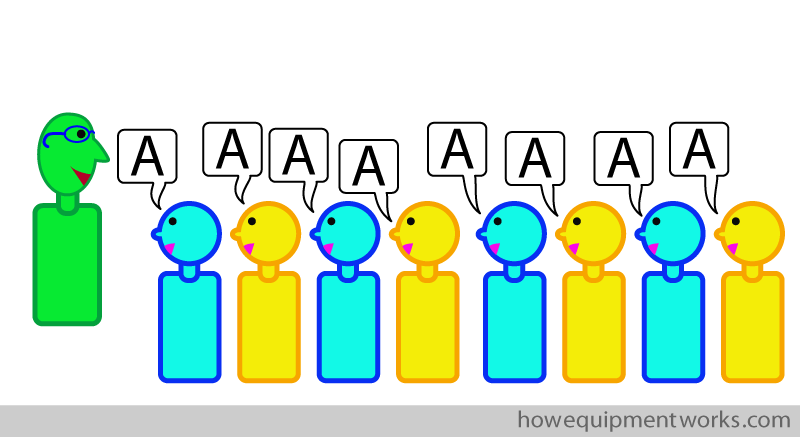
The teacher continues with the letter “B”.
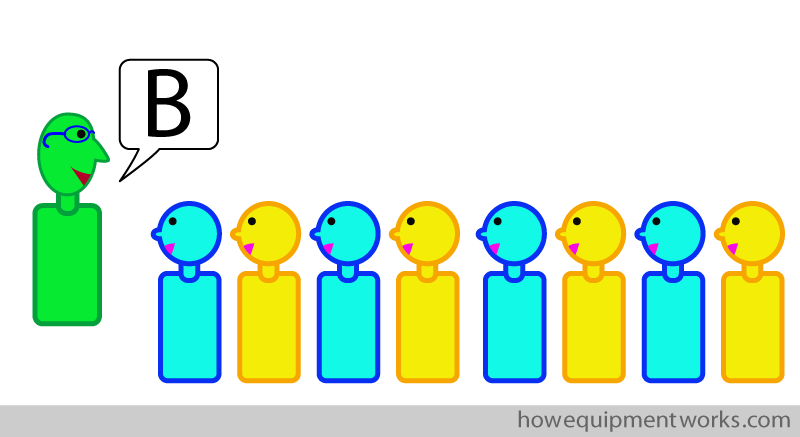
I am sure that you will agree that the children are learning in a very “organised” manner. The teacher first says something and the children listen. Then the children repeat what the teacher just said. These children are full of good discipline!
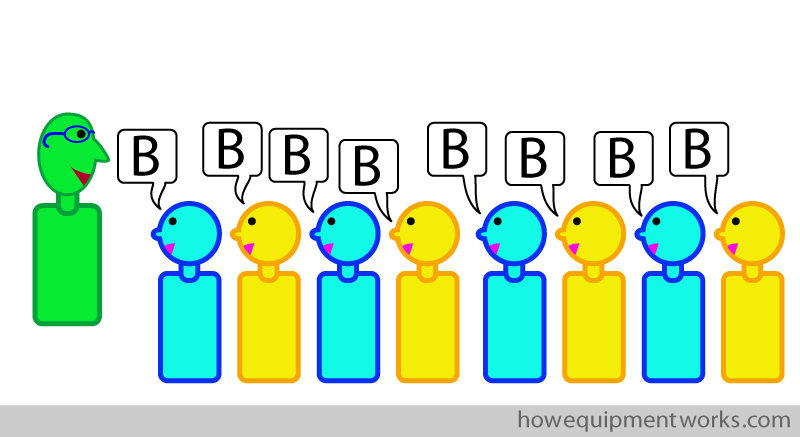
The heart muscle cells, like the children you saw in the classroom, are able to “listen” and respond. The heart muscle cells “listen” to their equivalent of the “teacher”, the “control system”.
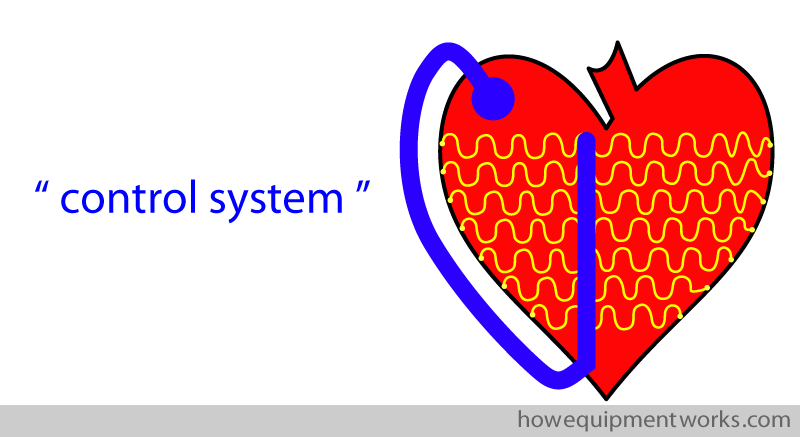
You will recall that it is the control system that “tells” the heart muscle cells to contract in a particular sequence. Because all the heart muscle cells listen and respond to the messages from the control system, they contract in a coordinated way, effectively pumping blood out of the heart.
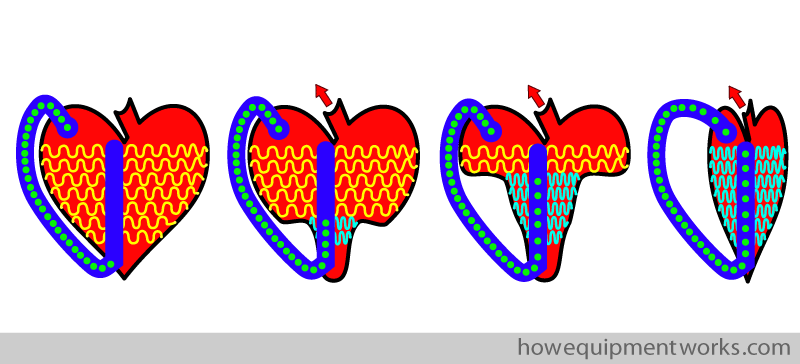
In other words, the heart muscle cells are like the good children we just saw in the school. Like the good children, they too, “listen” and obediently follow what is told to them.
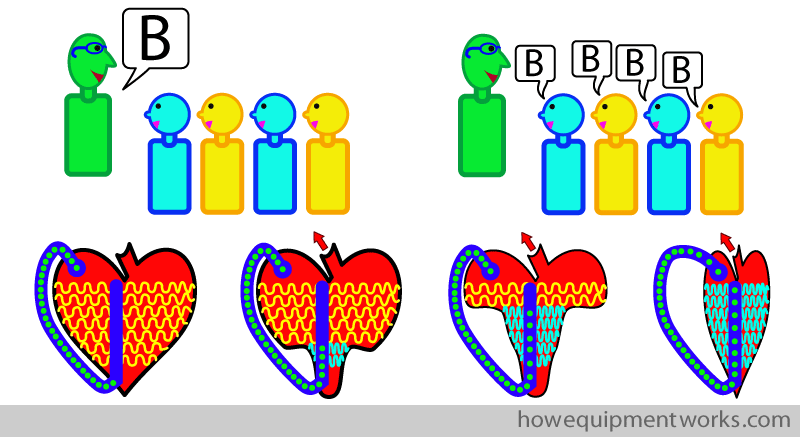
Let us go back to the school to see how the children are getting on. Things seem to be going well and the teacher has reached the letter “ M ”.
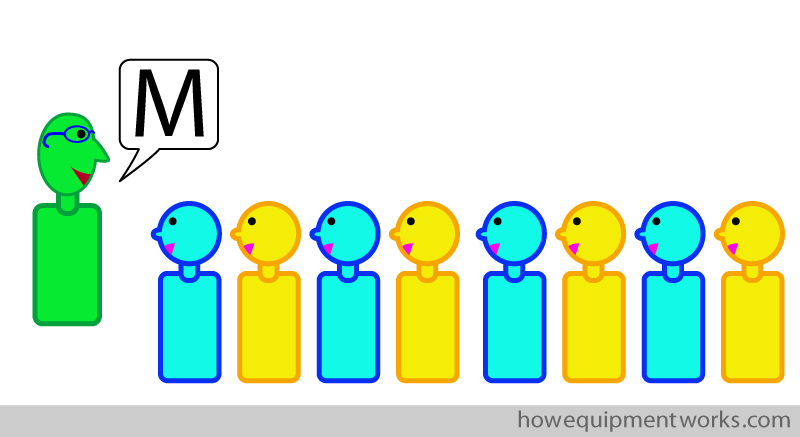
But the relative calm in the classroom is about to change quickly. You see, there is one child (shown in grey) who is getting bored of listening to the teacher. He is getting more and more “irritable”.
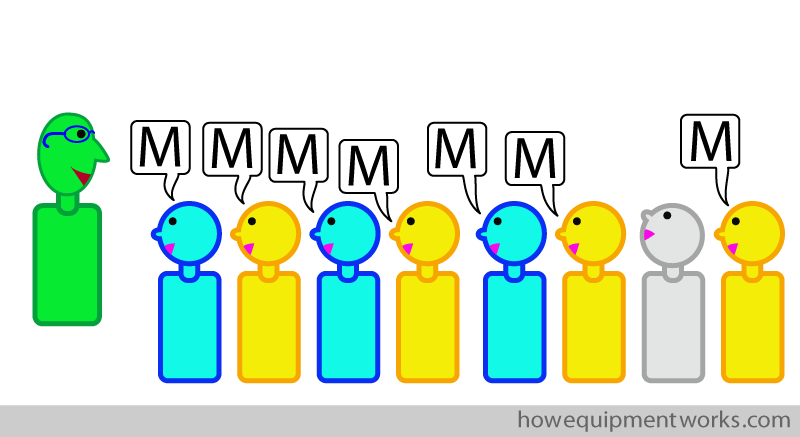
Eventually he can’t resist irritating the child next to him. Instead of listening to the teacher, he decides to talk to the child next to him.
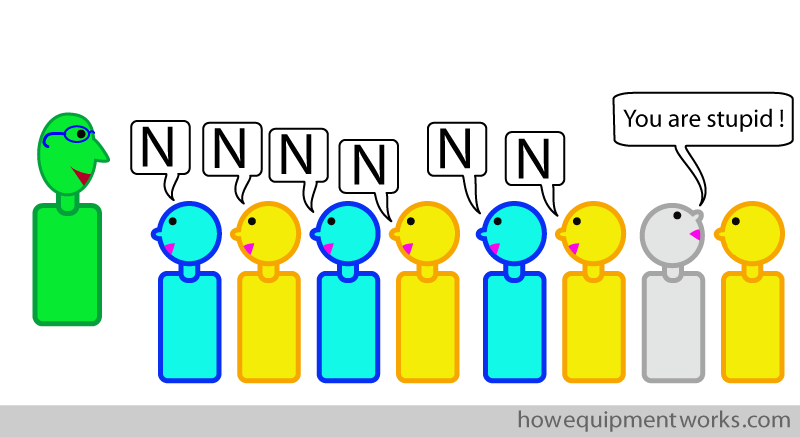
The child next to him gets distracted and replies.
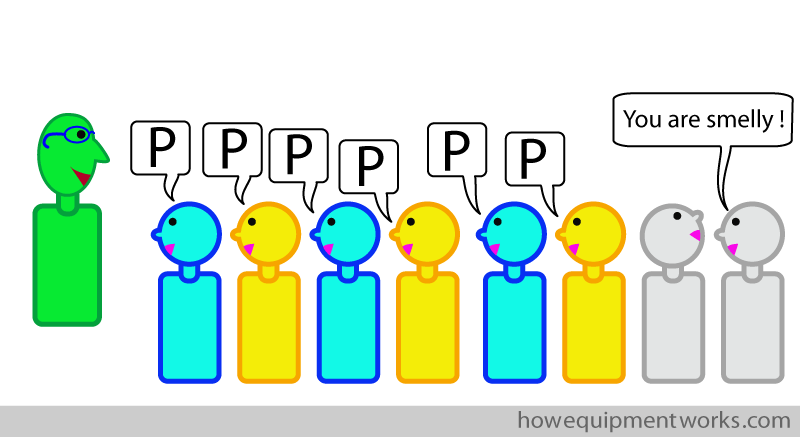
Unfortunately, the comments made between the initial children starts to affect the other children nearby.
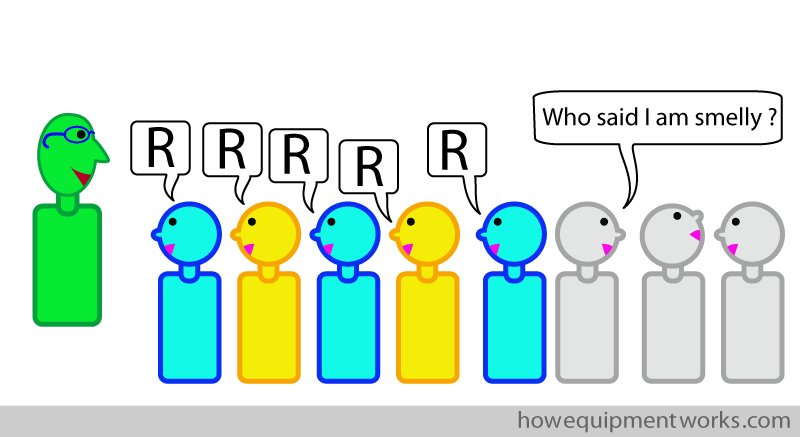
Soon the whole class is completely disorganised and all the children are erratically talking to and replying to the children near them. Even though the teacher is bravely continuing to teach, none of the children are listening to her. This is a disaster !
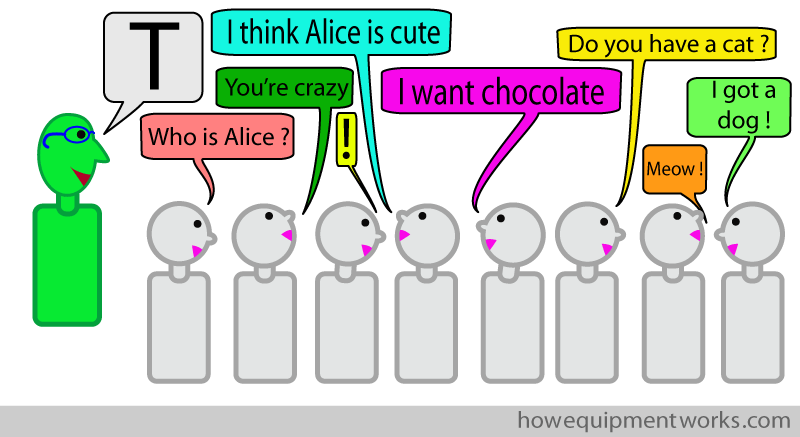
As I will explain to you soon, a similar thing can happen in the heart, making it go into ventricular fibrillation. As explained before, normally the heart muscle cells “listen and obey” the “control system” of the heart, so that they all work in a coordinated way to pump blood.
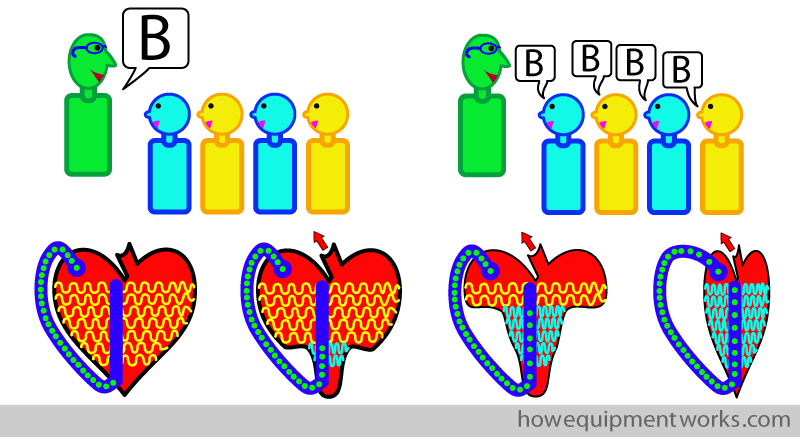
However, just like the naughty child in the classroom, a faulty heart muscle cell may become irritated and, ignoring the control system, start on its own to electrically “talk” with cells nearby (blue arrows).
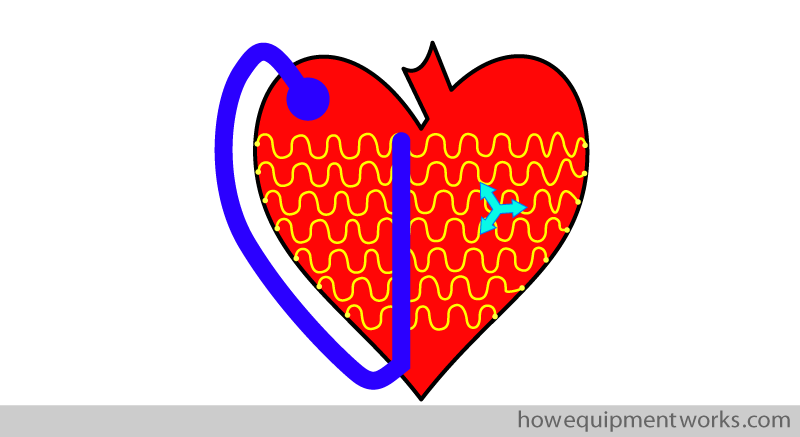
And just like in the classroom, this may eventually lead to all the heart muscle cells to erratically talk (electrically) to nearby cells. Instead of listening to the control system, they are all “chatting” among themselves!

The heart muscle cells are so busy talking (“electrically”) among themselves, that they ignore the electrical messages coming from the control system. They now contract in such a disorganised way that the heart appears to just “shiver” instead of contracting in an organised way. When this happens, the heart is said to be in “ventricular fibrillation” and in this condition, it cannot pump blood. This is a serious medical emergency and if nothing is done, the patient will die within minutes.
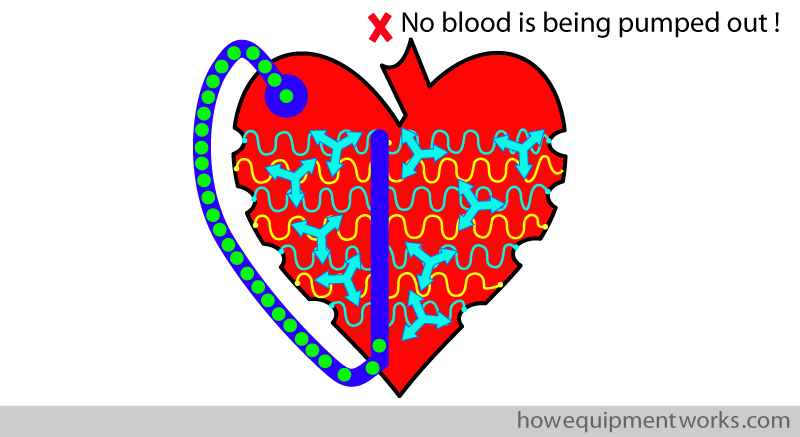
You may know what an electrocardiogram (ECG or EKG) is. Your doctor or other health care professional can use it to see the electrical activity (voltage) of your heart over a period of time. As we have discussed, the electrical signals in the heart are normally very organised. A normal ECG shows the organised electric signals as a waveform that repeats itself in a regular way. The red arrows show the beginning of each new heart beat. The waveform itself is somewhat complex, but hopefully you will see that it has a regular pattern, indicating that the electrical activity in the heart is occurring in a nice organised manner.
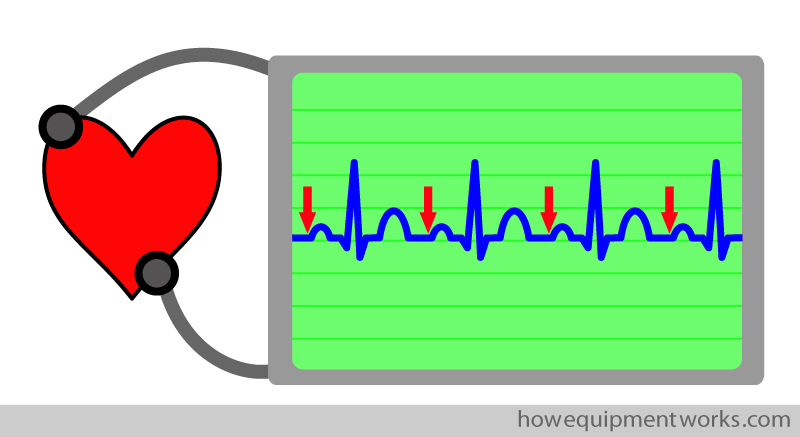
Now look at what happens to the ECG when the heart is in ventricular fibrillation. The disorganised electrical activity causes the ECG pattern to be completely disorganised as well.

What does a defibrillator do?
Now let us see how we can sort both, the noisy classroom and the fibrillating heart. Let us start with the classroom. Below is the disorganised classroom that you recently saw. However, this time there is an extra person, shown in pink. Who is this extra person ? Well, that is you! You have been sent to sort out the noisy disorderly children who are not learning anything at present.
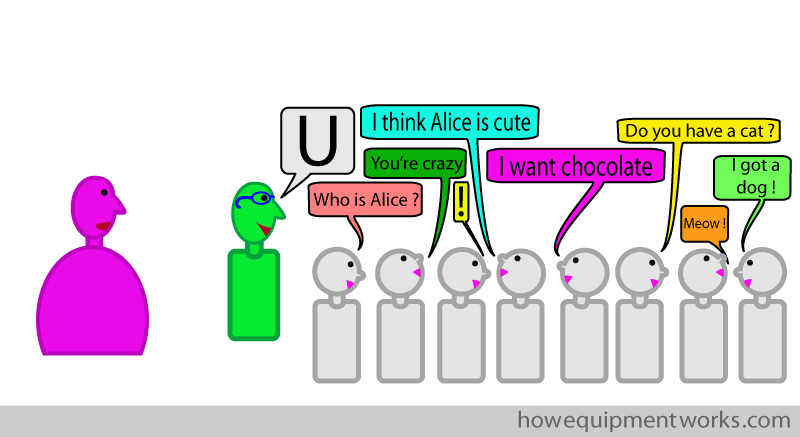
The solution to the problem seems simple. You quietly and sweetly say; “silence”. Why quietly ? Well you are a nice sweet person and don’t believe in raising your voice.
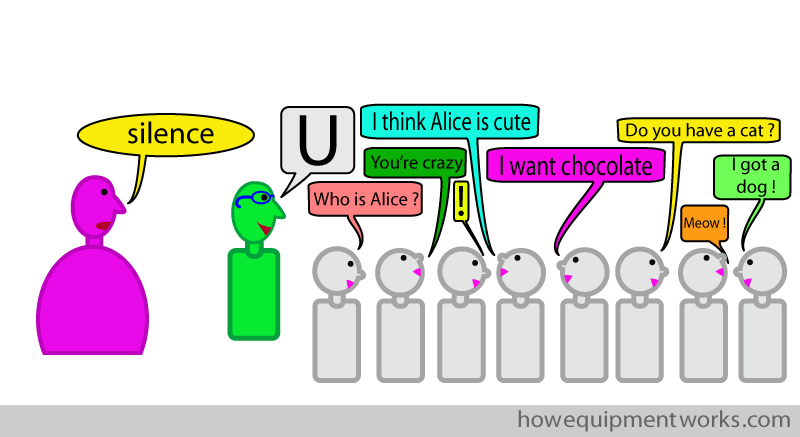
To your surprise (and perhaps anger ?) you find that nothing happens. You are being ignored and the disordered chatter among the children is continuing.
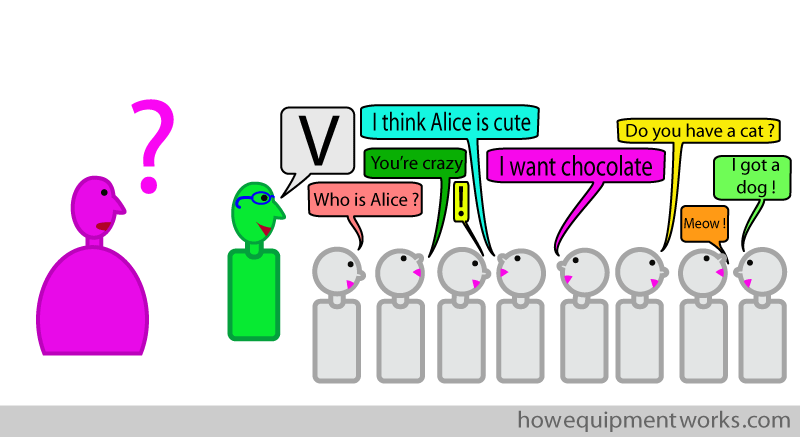
Now you decide to show your true strength. You take in the biggest breath of your life and shout as loud as you can, “SILENCE !”
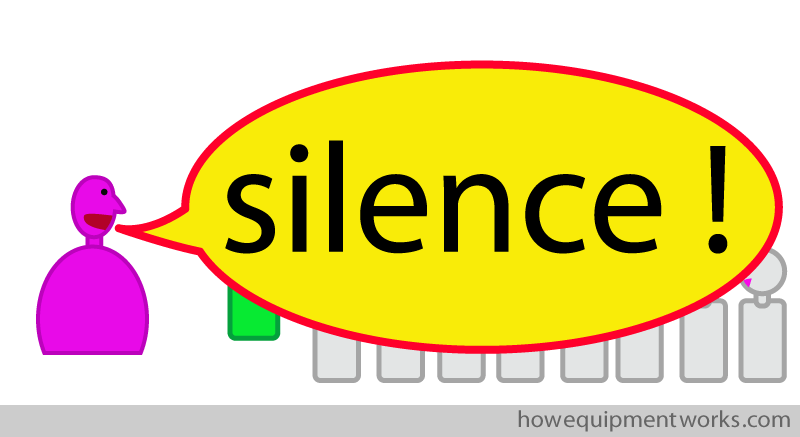
To your relief, something seems to be happening. There is complete silence ! Both, the teacher and the children are completely silent.
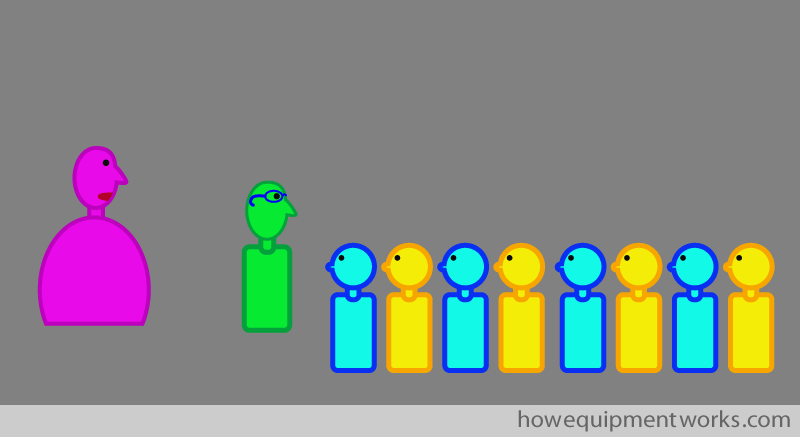
And then the teacher tries to teach again.
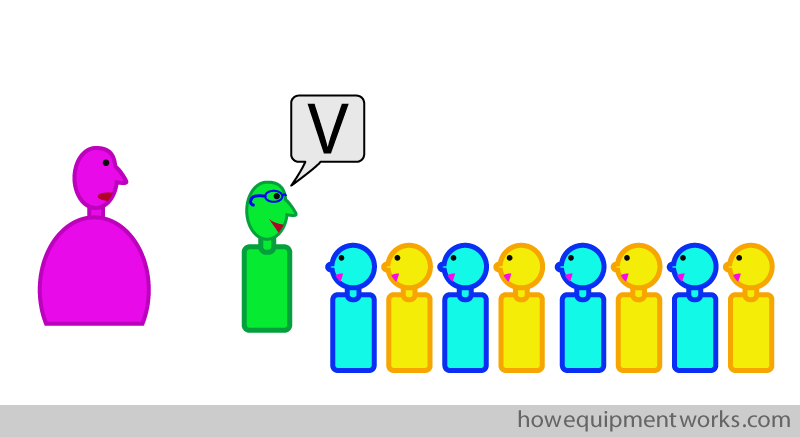
The children, who can now hear the teacher, start to learn ! Everyone, especially you, is happy that this situation has been solved.
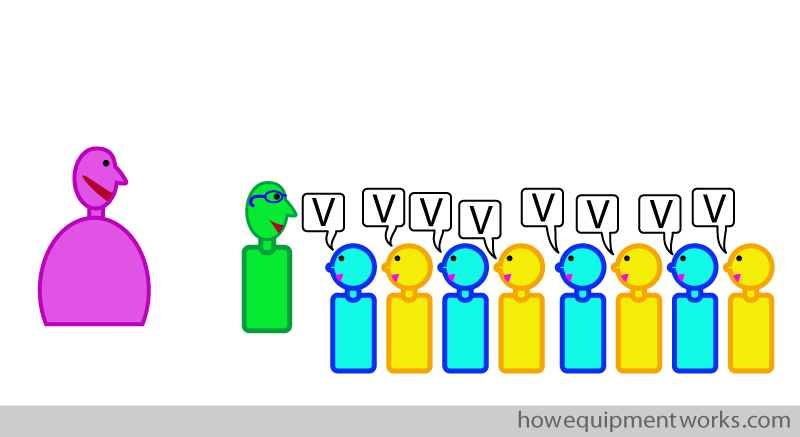
Now let us return to the fibrillating heart. As you will recall, in the fibrillating heart, the individual heart cells are crazily talking (electrically) to each other instead of “listening and obeying” the control system. This, as you know, leads to disorganised contractions and the heart cannot pump blood.
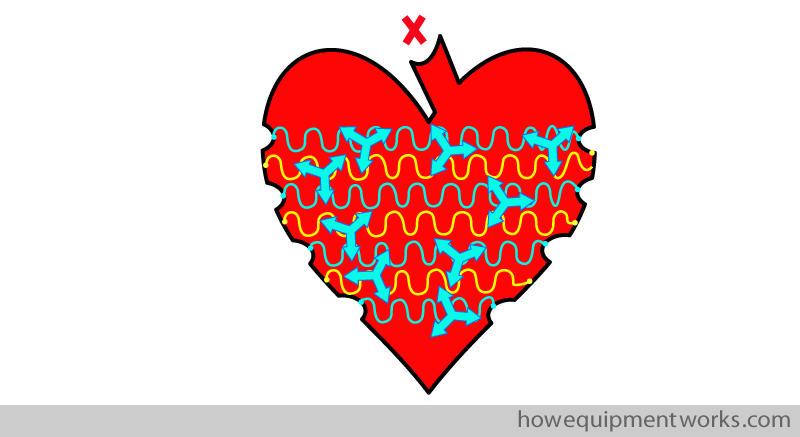
So, just like you did with the children in the classroom, you need to tell all the heart muscle cells to be “silent ”. Since the heart cells communicate with each other using electricity, it is possible to “electrically” tell all of them to be “silent”. This is can be achieved by passing a large electrical current through the heart. Let us do it now ! We place two large metallic pads (grey in diagram) on either side of the fibrillating heart. We send a large current (blue circles) between the pads. The large electrical current goes from one pad, through the heart, to the other pad. Sending a large current in this manner is the “electrical” way of shouting “silence !” to the chatting heart muscle cells.
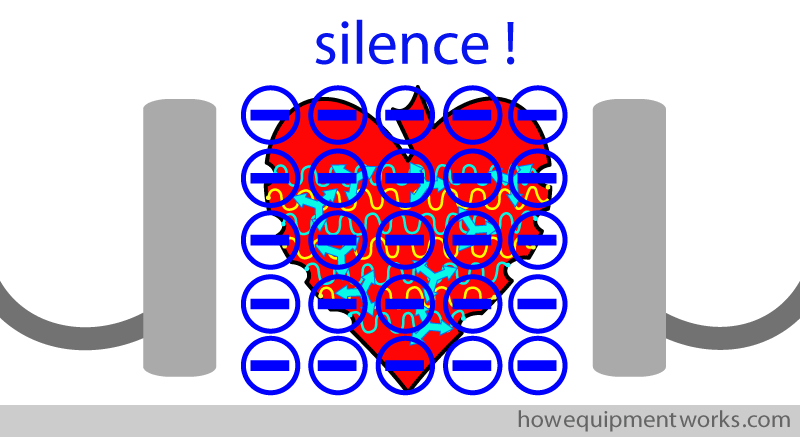
The exact mechanism of how a large current silences the electrical activity of the heart is a bit too complicated to explain on this equipment website. However, soon after the large current goes through the heart, the heart muscle cells stop sending electrical signals to each other and become electrically “silent”. Just like the silence that was there in the classroom after you shouted “silence”.
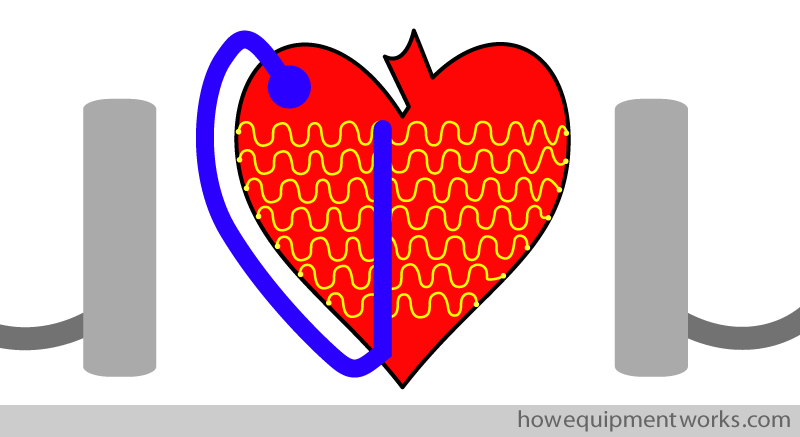
Now that everything is quiet, soon the heart muscle cells “hear” the coordinated electrical signals coming from the “control system” and start to contract in a organised way. The heart is therefore now able to pump blood effectively.
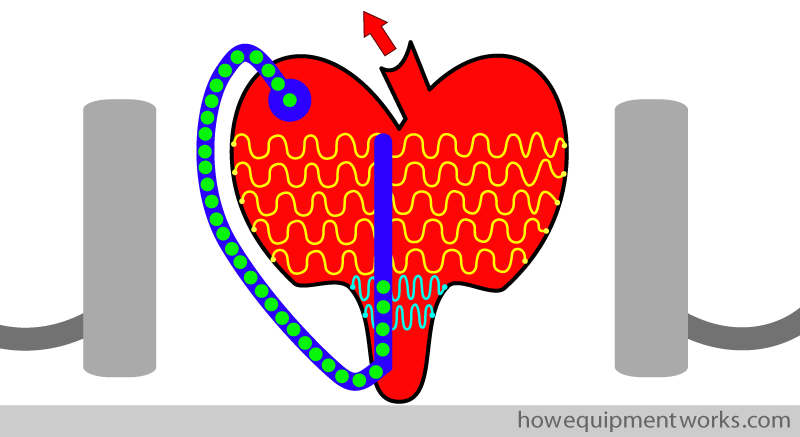
The diagram below summaries what we just talked about. We start with a heart in fibrillation (A). We now say the equivalent of “silence !” by passing a large current through the heart (B). All the heart muscle cells become electrically silent (C). Now the heart muscle cells can “hear” the signals coming from the control system and they start to contract in a organised manner (D and E).
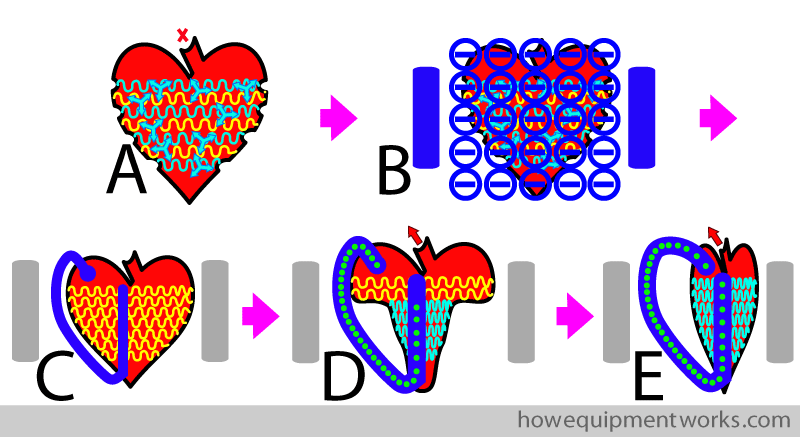
The use of a current to stop “fibrillation” is called “defibrillation”. And what is the device that passes the current through the heart to make defibrillation happen called ? You guessed it ! It is called a “defibrillator” !
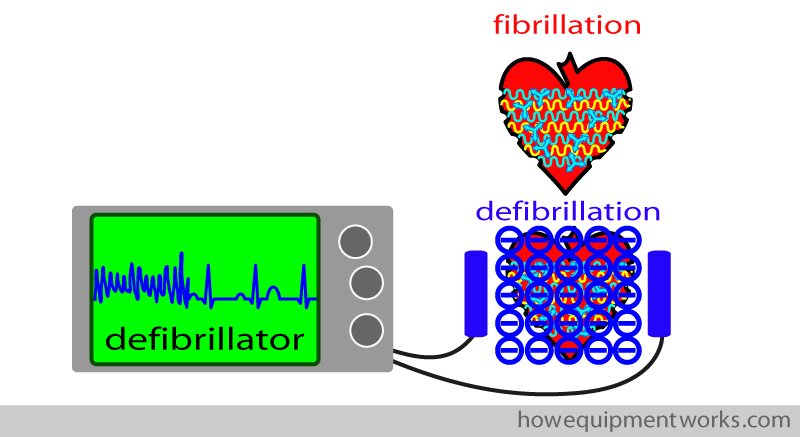
I would like to take you briefly back to the noisy class room. You will remember that when you “quietly” said “silence” that nobody listened to you and the classroom remained disorganised.
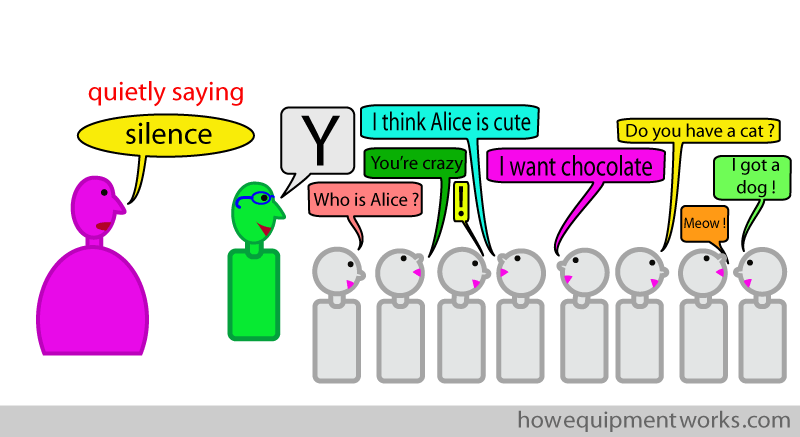
But when you loudly said “silence”, everyone listened and obeyed you. In other words, you had to shout loudly to make everyone hear you.
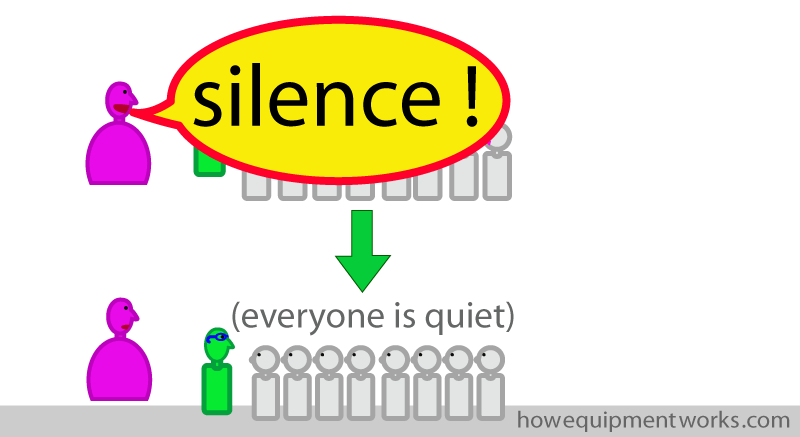
With defibrillation, a similar concept applies. To defibrillate an heart, the electrical current passed through it needs to be large enough to silence all the heart muscle cells. A small current would not work. A major design requirement of defibrillators is to have the ability to provide the necessary large current. How it does this will be explained to you soon.
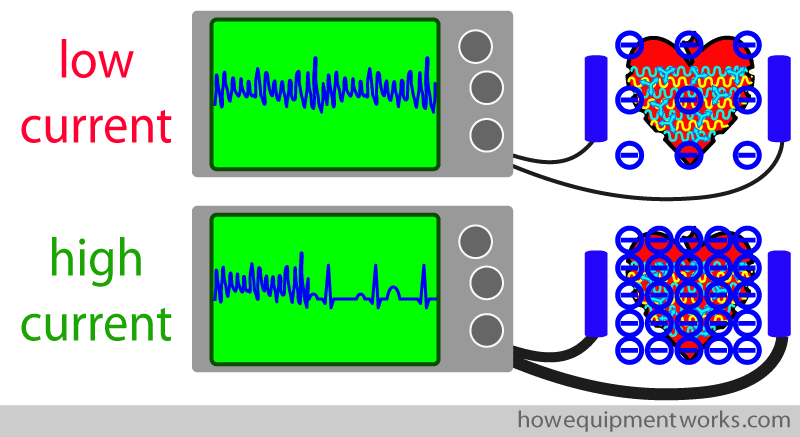
Now that you understand the basics of defibrillation, please click here to move to the page explaining how defibrillator machines work.